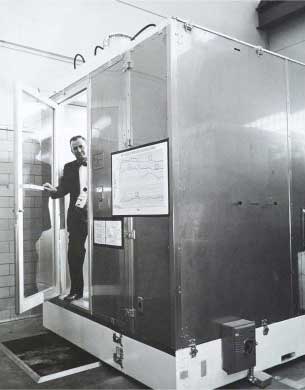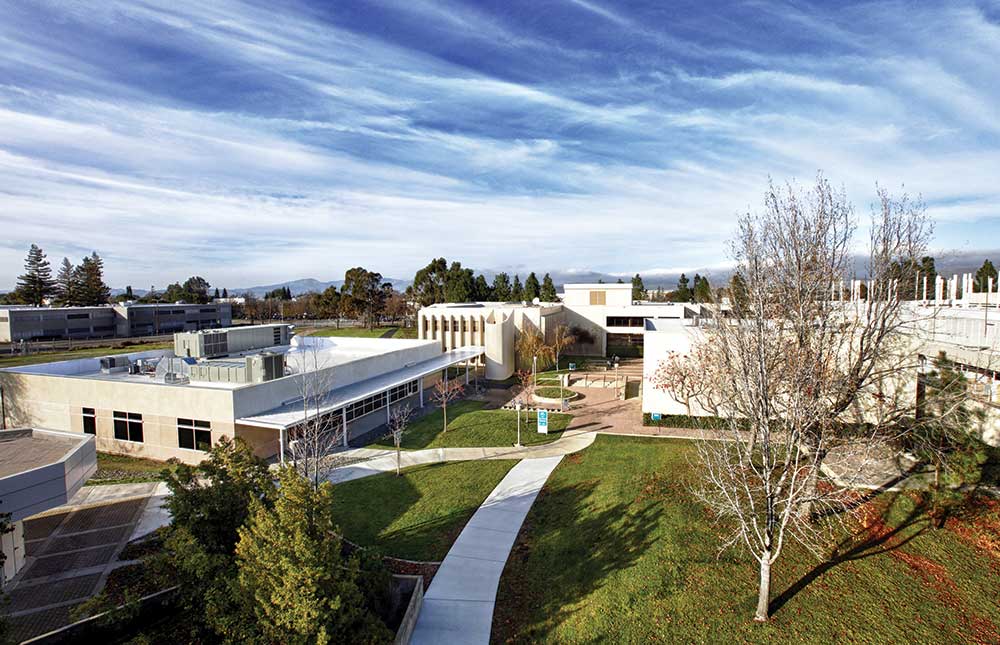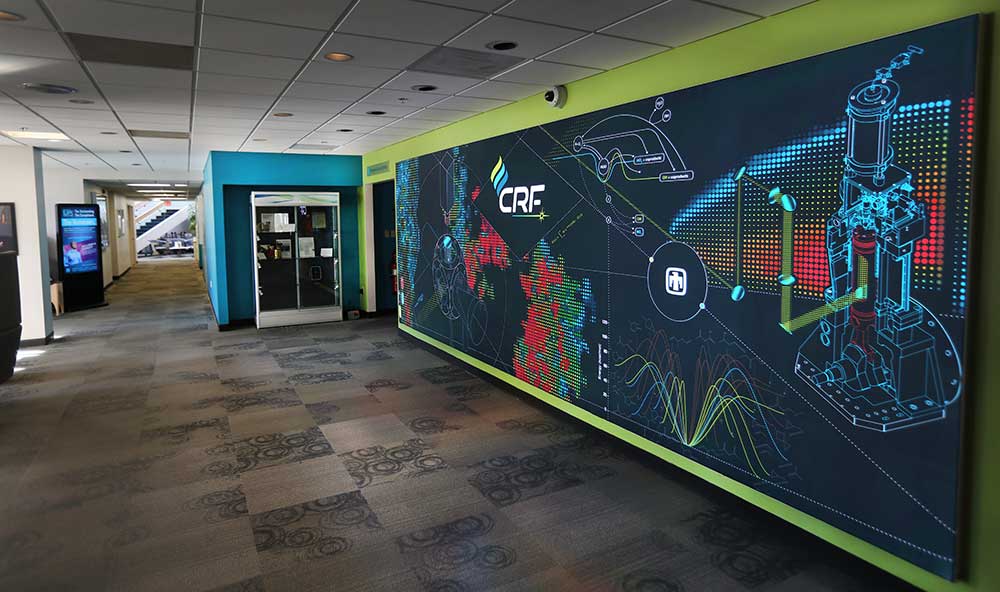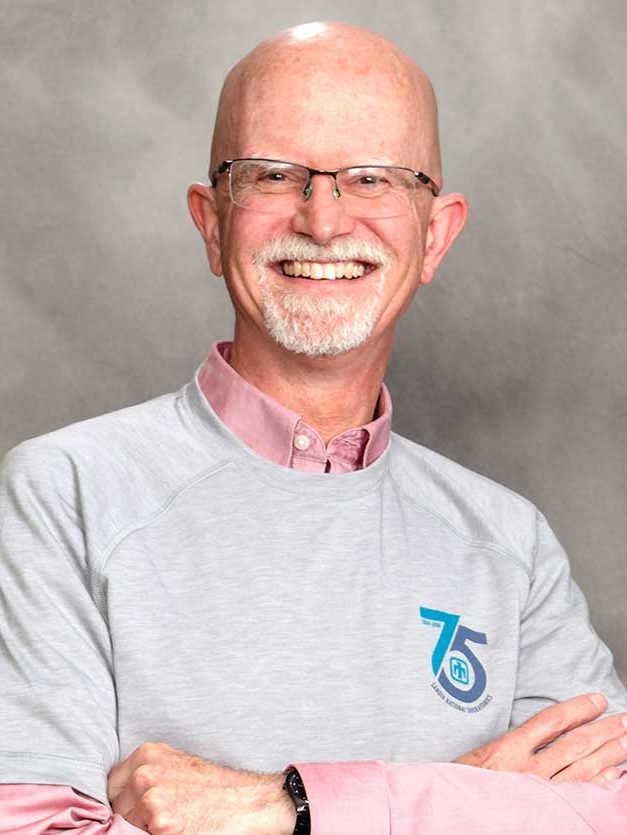California site Associate Labs Director Andy McIlroy reflects on impacts of the Labs through the years
Associate Labs Director Andy McIlroy, head of Sandia’s Integrated Security Solutions division, has worked at the Labs for 30 of its 75 years, witnessing the institution’s evolution into an internationally renowned, problem-solving juggernaut.
The first mission
“When you look at the 75-year history of the Labs, we were founded with a sole mission of nuclear deterrence,” Andy said, adding that it may be hard for younger generations of Americans and Sandians, who grew up following the end of the Cold War, to understand how the nation’s nuclear stockpile may have prevented international conflict.
“As awful as nuclear weapons are, they have brought a certain level of peace and stability to the world that was sorely lacking in the several centuries previous to that,” Andy continued. “People were genuinely worried about nuclear war. The nation’s arsenal has served its purpose and has deterred numerous bad outcomes. Looking back, Sandia has played a central role in creating the safe, secure deterrent that made this possible and has given policymakers a tool to keep the peace. When I consider what might have been, I think we can be proud of being part of that deterrent and helping to achieve a historically unprecedented level of global stability.”
Sandia, which engineers all the non-nuclear components of weapons systems, has been a central champion for building safety systems into the stockpile.
“It’s an incredible achievement — planned and executed largely by Sandia teams — to attain the level of safety that we have in nuclear weapons,” Andy said. “Over the years, some plane crashes and other accidents have come closer to an unintended detonation than anyone would like. I think it’s fair to say that Sandia has played an outsized role in assuring the safety and security of the weapons during our 75-year history. Nuclear weapons will remain secure, due in no small part to the work of our amazing scientists and engineers.”
From weapons to world-changing technology
The reputation and experience that Sandia has developed as systems analysts and engineers since 1949 have made modern life possible — from the microchip to the automobile.

In 1962, Labs physicist Willis Whitfield created the world’s first laminar-flow cleanroom, which filtered microscopic particles out of the air — allowing for the manufacturing of extraordinarily sensitive technologies in an atmosphere free from pollutants. This technology, licensed by Sandia around the world, has enabled billion-dollar industries to flourish, including microchips that are found in almost everything today.
“The laminar-flow cleanroom is a fundamental pillar in modern microelectronics,” Andy said. “Talk about impact on the lives of everyday people! People who video chat, for example, do so over probably 50 different computers without realizing it. Smartphones. Cars. Most people don’t know how one invention at Sandia enabled our modern way of life. The story is rarely told because it happened so long ago.”
That was just Sandia’s first step in ushering in the modern electronic age.
“In the 1990s, Sandia California, along with Lawrence Livermore and Lawrence Berkeley national labs, led what is still the largest cooperative research and development agreement in the history of the national lab complex,” Andy said. “We partnered with the Semiconductor Manufacturing Technology, a not-for-profit consortium of companies focused on advancing microchip manufacturing, to develop practical extreme UV lithography.”
Extreme ultraviolet lithography is a method, using UV light, to create intricate patterns on silicon wafers. The method allows chipmakers to create electron pathways on wafers as small as three to five nanometers. This made it possible to create smaller technologies more powerful than anything that had come before.
“It was at Sandia California that the first EUVL machine was invented. We made the first prototype and demonstrated it,” Andy recalled. “It took 20 years before that became a practical industry capability, but the very highest-performance microchips of today are directly traceable back to the work that Rick Stulen (former vice president of Sandia California), Glenn Kubiak (former director of the Biological, Radiation, and Signature Science, Technology, & Engineering center), and their team did.”
Sandia, under the hood
Another era in scientific discovery was born inside the Combustion Research Facility on the Sandia California campus — one that has silently impacted the automotive industry for decades.

“Our focus was on clean and efficient combustion,” said Andy, who previously oversaw the Combustion Research Facility in one of his many prior roles at Sandia. “I once fielded a question from someone in academia during a CRF function about how much the work we were doing mattered because they didn’t see many patents coming from there. Standing with me was the director of research and development for General Motors. Before I could respond, he said — quite succinctly I might add — ‘There is not a single car in the parking lot outside this building, domestic or international, whose engine has not been affected by the work done in this building.’”
Andy said that Sandia’s fundamental work to understand combustion have helped the design of several generations of cleaner and more efficient vehicle engines.
“But there’s no Thunderbird stamped on all those engines, so most people don’t know about that part of the story,” he said.
National interest, international impact
Andy also pointed out the Combustion Research Facility’s status as one of the few facilities in the national security lab complex to host collaborators from all over the world.
“The founders of the CRF were rather prescient in understanding the importance of collaborating throughout the world on areas of common interest where national boundaries are less important,” Andy said. “If you’re going to say you’re the best in the world, the only way you can know for sure is by diving into the international competition of ideas. Peer interactions and peer reviews hone your skills and make you better. They also help you understand what is actually state-of-the-art.”

The Livermore Valley Open Campus, which includes portions of both Sandia California and Lawrence Livermore National Laboratory, has created a nexus of national lab experts, foreign national experts and the Bay Area’s high-tech community to tackle groundbreaking work. But the campus is about more than science diplomacy.
“The LVOC is critically important for our national security missions,” Andy said. “Our energy and science programs give us global arenas to test ourselves, so we can see where we stand and make sure we rise up to truly be the best in the world. The world is a far more competitive place than it was seven decades ago. Understanding where we sit in that space and other countries’ capabilities is vital.”
The evolution of Sandia’s culture
Modernizing research and capabilities for the 21st century is not the only way in which Sandia has evolved.
“In the ’50s,” Andy said, “there was a model of recruiting the smartest people at a college campus to work at the Labs. Unfortunately, this meant that the early Sandians were almost all white males, especially because women were actively kept out of scientific fields. My own mother tried to take physics in college and was literally told by the professor to leave and unregister from the class.”
Today, Andy sees a diverse laboratory, composed of individuals who have come to Sandia from a range of backgrounds, bringing different cultural viewpoints. He also sees the incalculable benefits of that diversity.
“When teams have a wide range of expertise and viewpoints, they usually do better —sometimes a lot better,” he said. “Your culture and where you came from influence how you think about solving problems and how you approach those things. People who say, ‘Oh, it’s all just technical, you don’t need that,’ sell themselves and their organizations short. If we still limited ourselves to hiring white, male, U.S.-born scientists and engineers, we would have an awfully small pool to draw from, and we would miss out on lots of talent.”
Andy believes in casting a wide net to find the best possible minds on earth to tackle the most pressing issues facing the nation and the world.
“The nation has become more diverse, and the competition for that talent has become much more intense,” he points out, particularly when it comes to policymaking. “When we sit down at Sandia’s senior leadership table, we have true diversity around the table and different ways of thinking about problems. We reach better solutions that way. Sometimes things can be a little rocky during our discussions because folks are coming from very different perspectives and different ways of thinking about things.”
“But,” Andy said, “the solutions that we arrive at are better for having been tested in all those different dimensions. This has been a really positive evolution for us as a laboratory.”
And that evolution is one of many things to celebrate in Sandia’s 75-year history.
